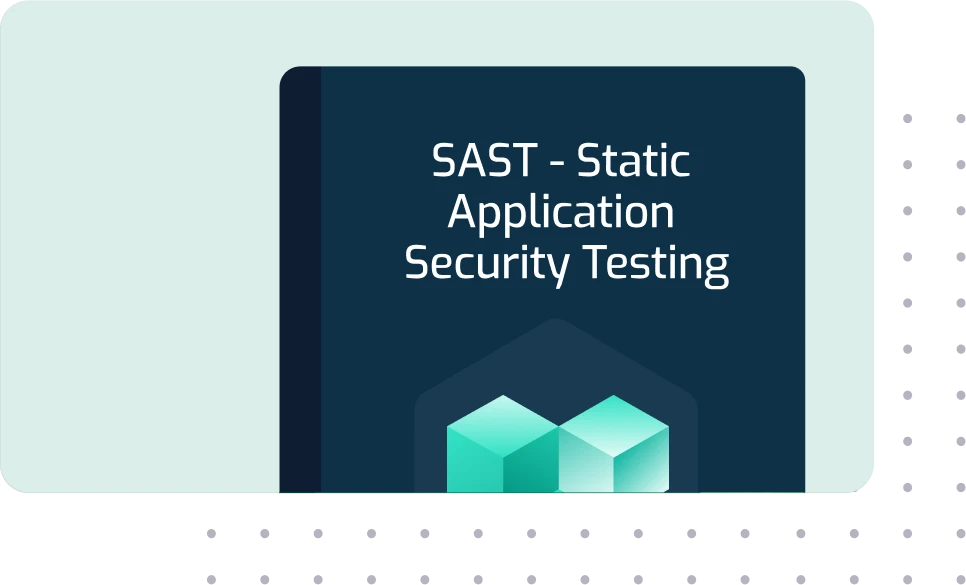Get a Personal Demo
Faster, Accurate,
Developer-Friendly SAST Scanner
Enhance the security of your code from the get-go with static application security testing (SAST) designed by developers, for developers.
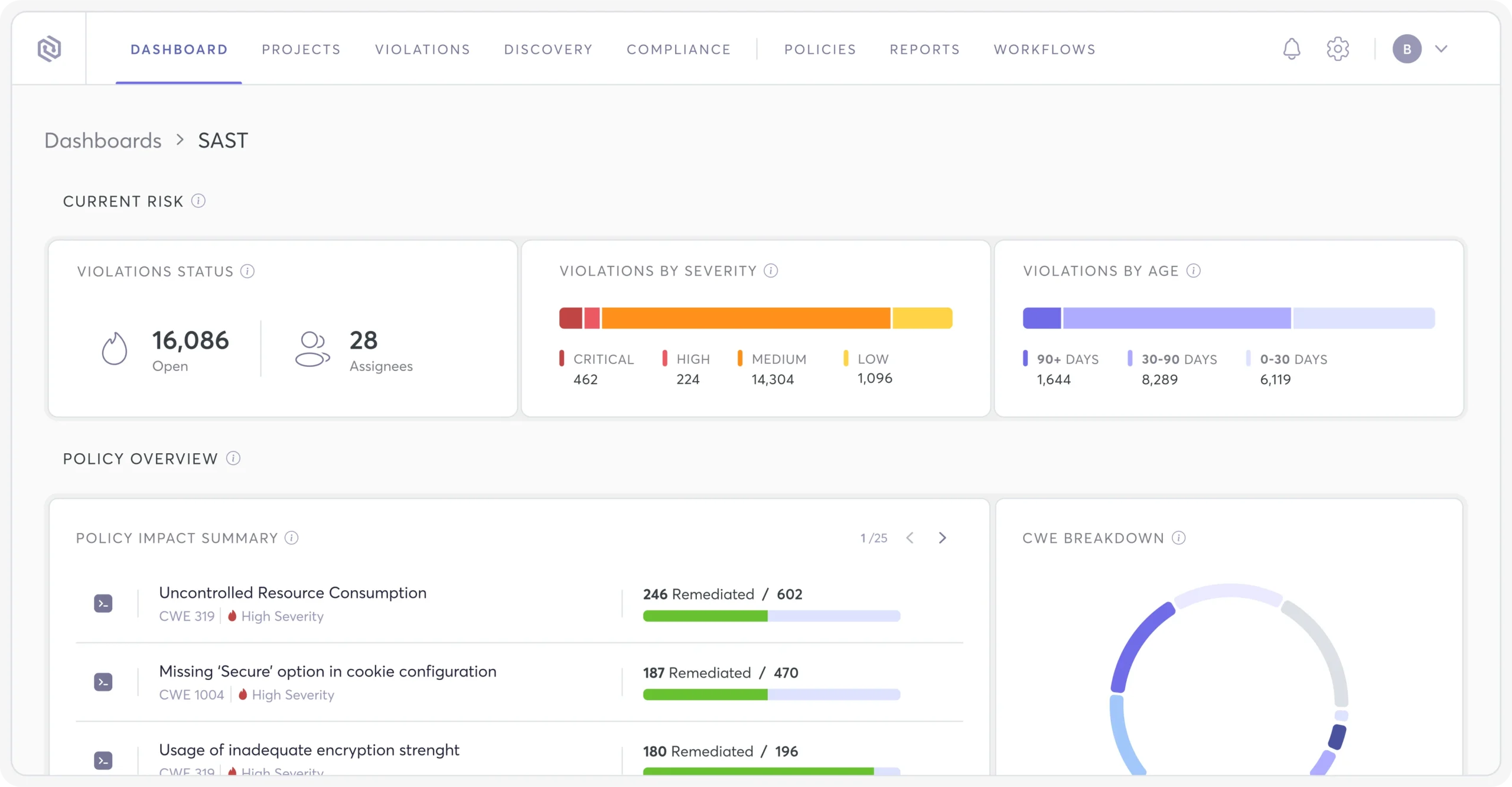
{ Scanning }
Continuous SAST Scanning Built
for DevOps Velocity
Keep delivering software fast with 31% faster SAST scanning that enables you to find and fix vulnerabilities in code without
disrupting the speed of development.
Continuously scan every code change
OWASP top 10 vulnerability detection
Customizable detection logic
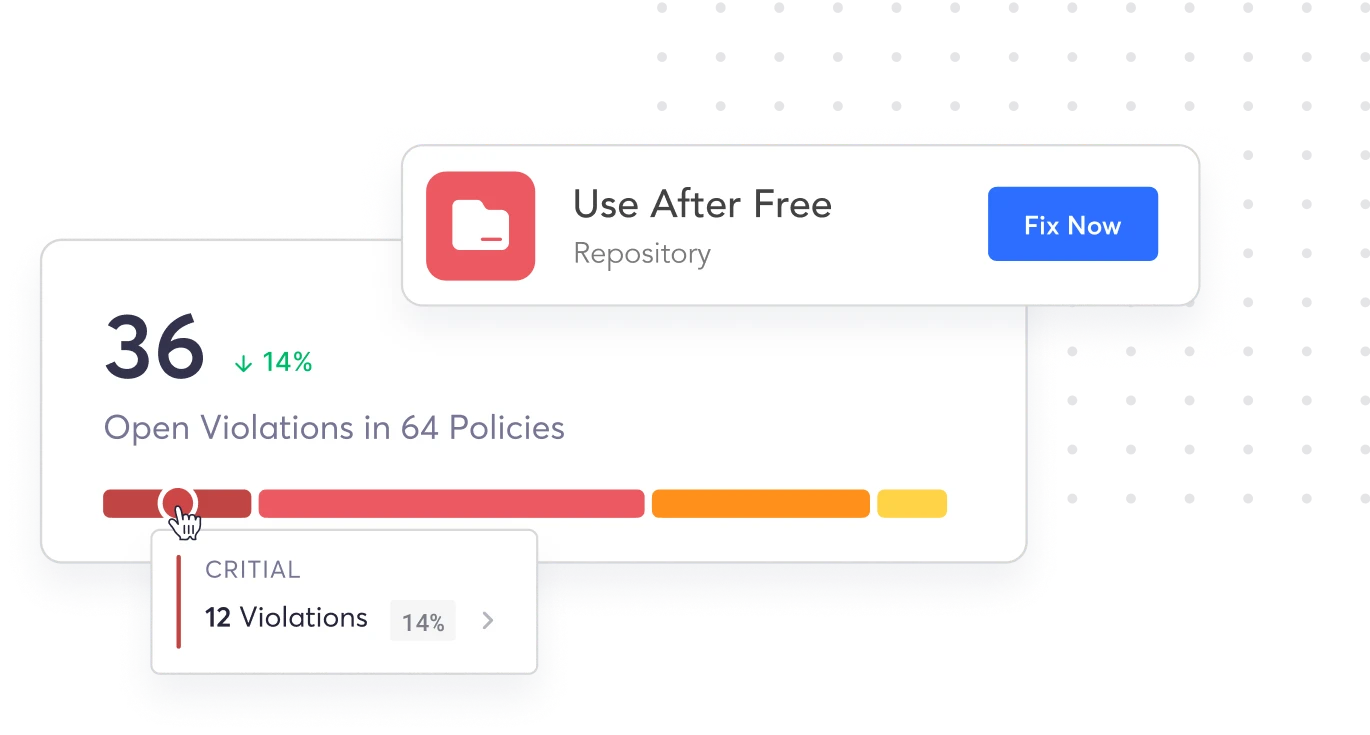
{ Remediation }
AI-Driven Context
for Faster Remediation
Find customized explanations ready and waiting for every security issue. Leverage Cycode’s Risk Intelligence Graph (RIG) for AI-enabled code to cloud traceability across the SDLC, providing insights from development to production. No more wasting developers’ time on non-critical findings.
AI-suggested code fixes
AI-powered context via the RIG
Enhanced precision for the most accurate results
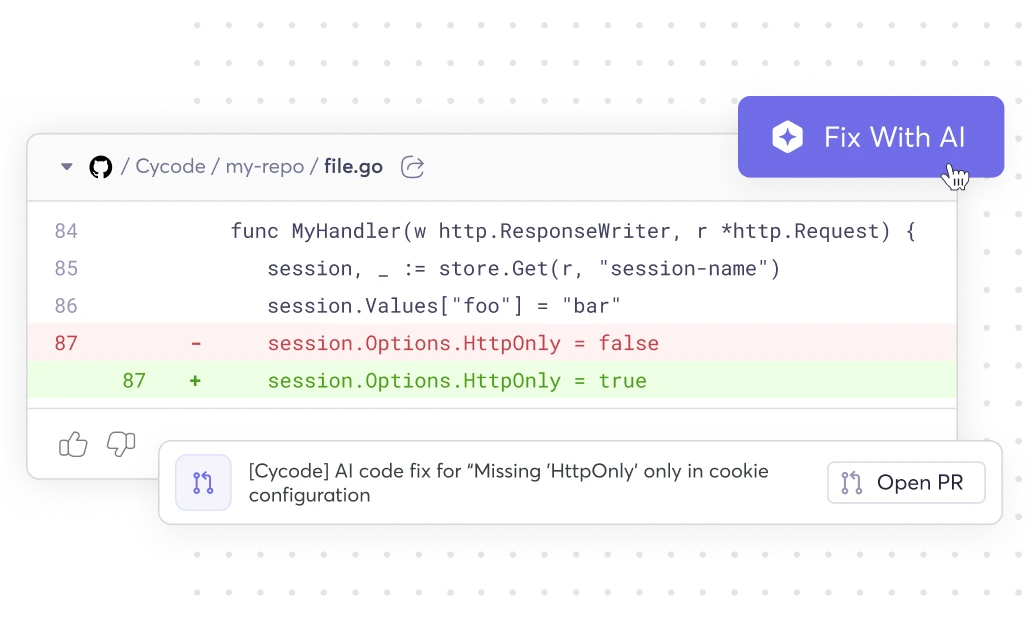

{ Experience }
Unparalleled Developer Experience
Developer-friendly static code analysis so you can enforce security standards across all your apps from a single platform.
Built-in rules for each language
Custom rules
Live terminal execution
Pull request scanning
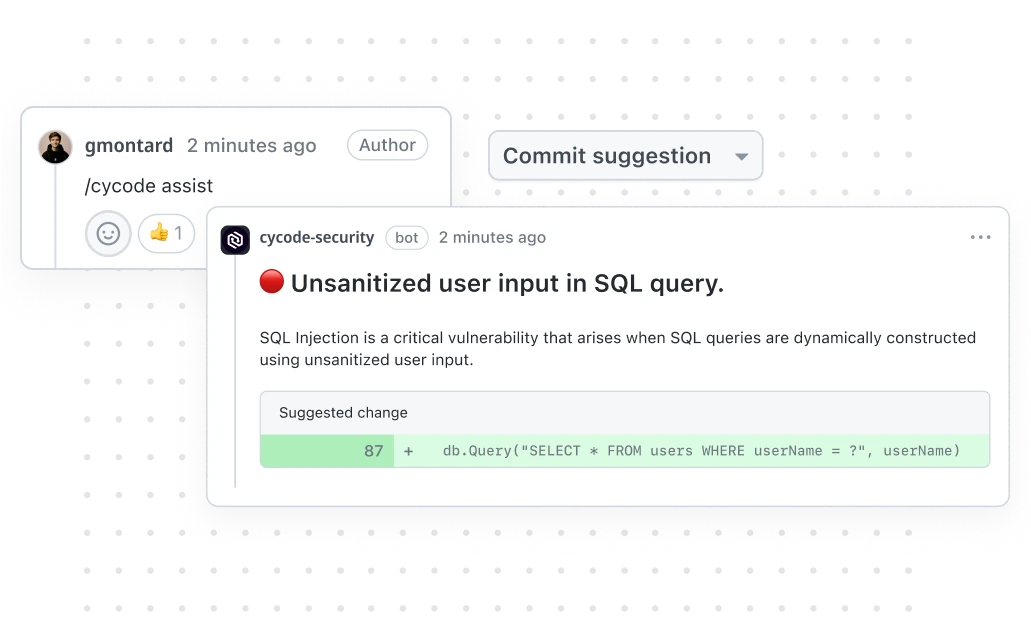

{ Coverage }
Complete Stack Support
Cycode SAST supports a wide range of programming languages and
SCMs, and our coverage is constantly expanding.
Language support for Java, C#, JavaScript, PHP, Python, Ruby, Go, and many more.
SCM support for GitHub, GitLab, BitBucket, Azure DevOps, Gerrit, and more.
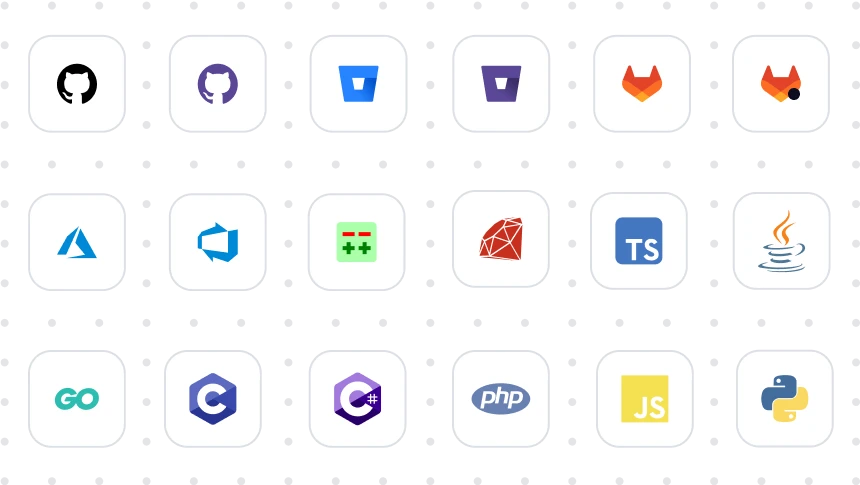

{ Protection }
Enterprise SAST Analysis Designed to Scale
Cycode’s SAST solution goes beyond vulnerability detection. It delivers real business value at scale. By combining enterprise-grade accuracy with developer-friendly workflows, organizations can:
Accelerate remediation with prioritized, high-fidelity results that cut through noise
Reduce risk exposure by identifying vulnerabilities early in the SDLC
Lower operational costs by consolidating tools and streamlining workflows
Improve developer productivity with context-rich insights directly in existing pipelines
Frequently Asked Questions About SAST
What is SAST tool?
Cycode’s SAST scanner takes this a step further by delivering enterprise-grade accuracy, seamless integration, and risk-based prioritization. Designed for scale, it empowers organizations to fix what matters most by providing context-rich insights, streamlined remediation, and a developer-friendly experience across the entire SDLC.
Why Is SAST Analysis Critical in the SDLC?
What Tools Can Be Used for SAST Security?
On the other hand, open-source SAST scanning tools provide flexibility and cost savings but require more effort to set up and maintain. There’s also the risk of delayed updates and inconsistent quality, which can leave applications vulnerable.
| Offering | Enterprise SAST | Open-Source SAST |
|---|---|---|
| Support | Extensive | Limited |
| Integration | Robust | Requires Effort |
| Cost | High | Low |
| Update frequency | Regular | Varies |
| Quality | Consistent | Inconsistent |
In contrast, a modern SAST scanner offers faster speeds and more precise findings, enhances the developer experience, and supports continuous code delivery. It also tends to incorporate AI-powered code resolution for automated fix suggestions, streamlining the remediation process.
| Feature | Traditional SAST | Modern SAST |
|---|---|---|
| Scanning Speed | Slow | Fast |
| Integration | Robust | Requires Effort |
| False Positive Rates | High | Low |
| Developer Experience | Poor | Enhanced |
| Automation | Minimal | Robust |
A complete ASPM platform offers its own proprietary scanning tools, including SAST, IaC, SCA, and more, into one solution, providing a unified approach to securing applications that addresses vulnerabilities across the development lifecycle and all components. It also allows you to integrate any of your third-party tools. This holistic approach ensures robust measures are in place at every stage, enhancing overall posture and efficiency.
How Does Static Application Security Testing Work?
SAST vs DAST: What’s the Difference?
While SAST targets code issues, DAST focuses on runtime vulnerabilities, making them complementary for a comprehensive security assessment.
SAST vs SCA: What’s the Difference?
Together, SAST and SCA provide a complete security check by covering both internal code and external dependencies.
What Problems Do Cycode’s Static Application Security Testing Tools Solve?
It also helps address the challenge of maintaining security across large, complex codebases by continuously scanning for issues and providing actionable feedback. By integrating into CI/CD pipelines, SAST enables enterprises to catch vulnerabilities early, reducing friction between security and development teams while accelerating software delivery.
What Kind of Vulnerabilities Can a SAST Scan Find?
- SQL injection
- Cross-site scripting (XSS)
- Buffer overflows
- Insecure authentication mechanisms
How Can Cycode’s SAST Security Tools Support Compliance Requirements?
Our SAST scanner provides the visibility and evidence needed to demonstrate adherence to frameworks like NIST Secure Software Development Framework (SSDF), FedRAMP, and other regulatory mandates. With automated reporting and continuous monitoring, Cycode simplifies audits, accelerates attestations, and ensures that compliance isn’t just a checkbox, but a natural outcome of your development process.
What Should Enterprises Look for in Modern SAST Solutions?
- High-fidelity results with risk-based prioritization to cut false positives
- Scalability to handle large, complex codebases and multi-language environments
- Proprietary scanners that deliver enterprise-grade accuracy beyond open-source engines
- Seamless integrations across CI/CD pipelines, IDEs, and existing security tools
- Developer-first workflows with contextual insights and automated remediation support
- Comprehensive reporting to meet compliance and executive visibility needs

 Solution Brief
Solution Brief


